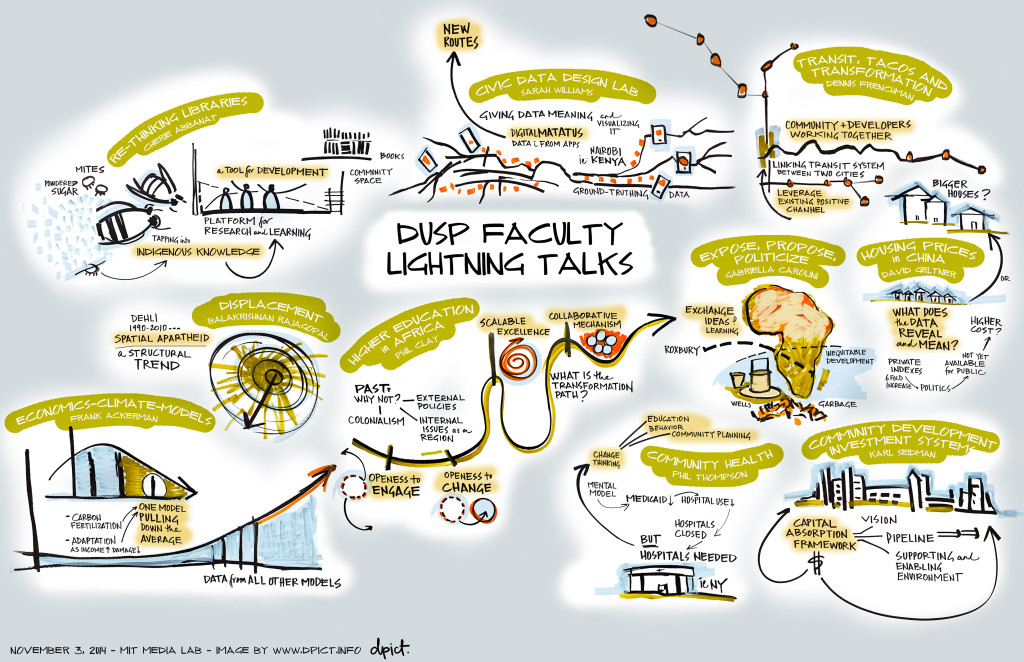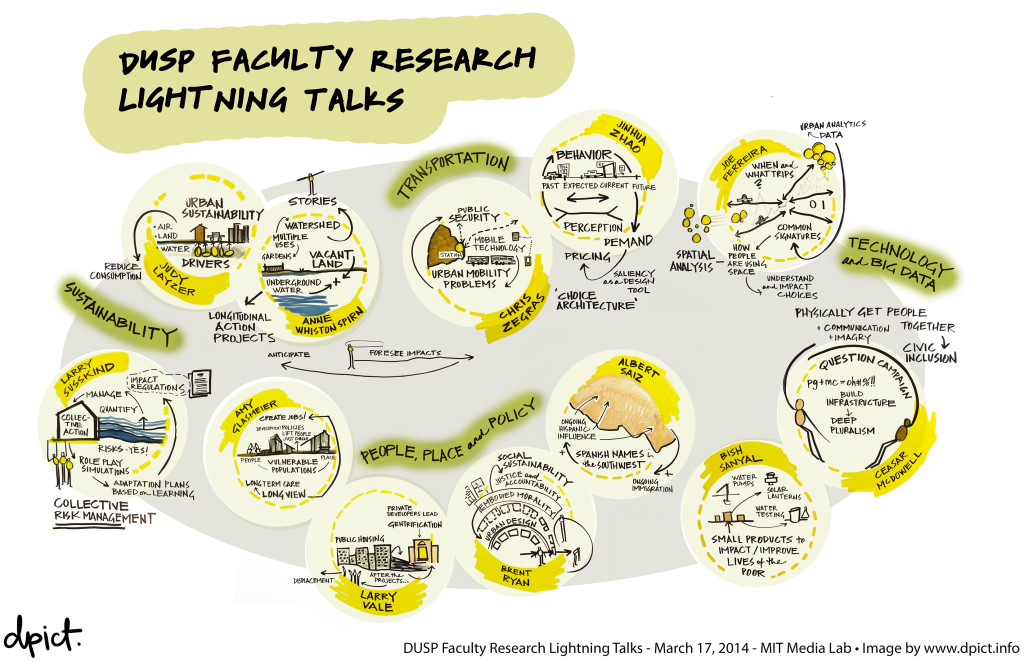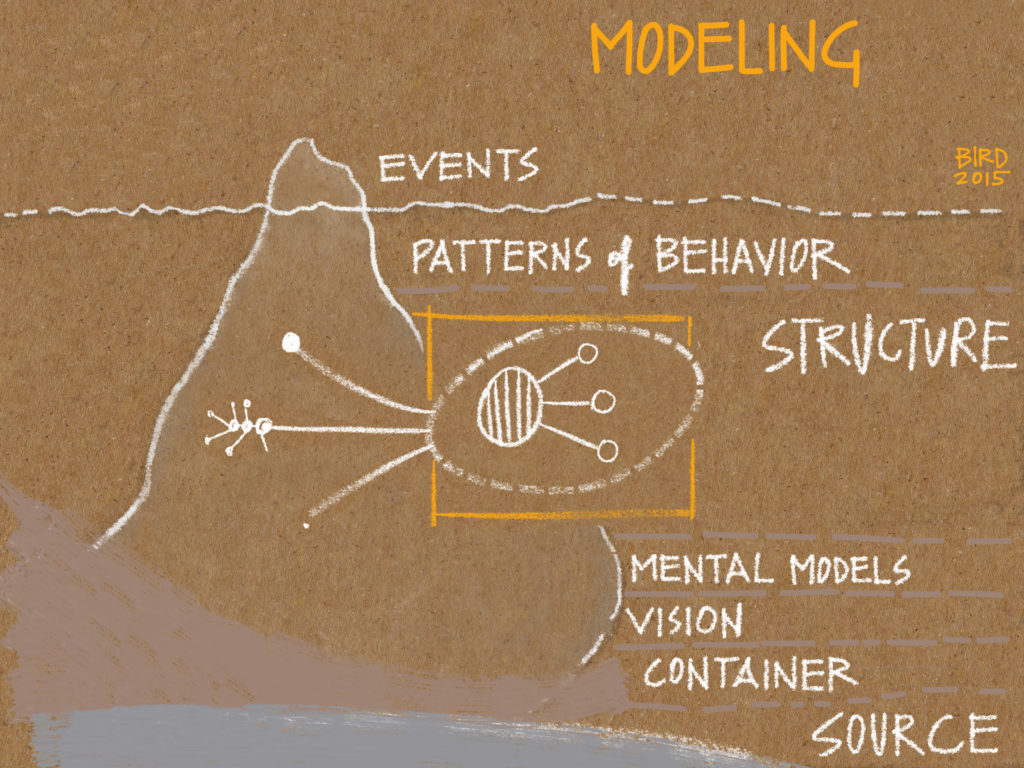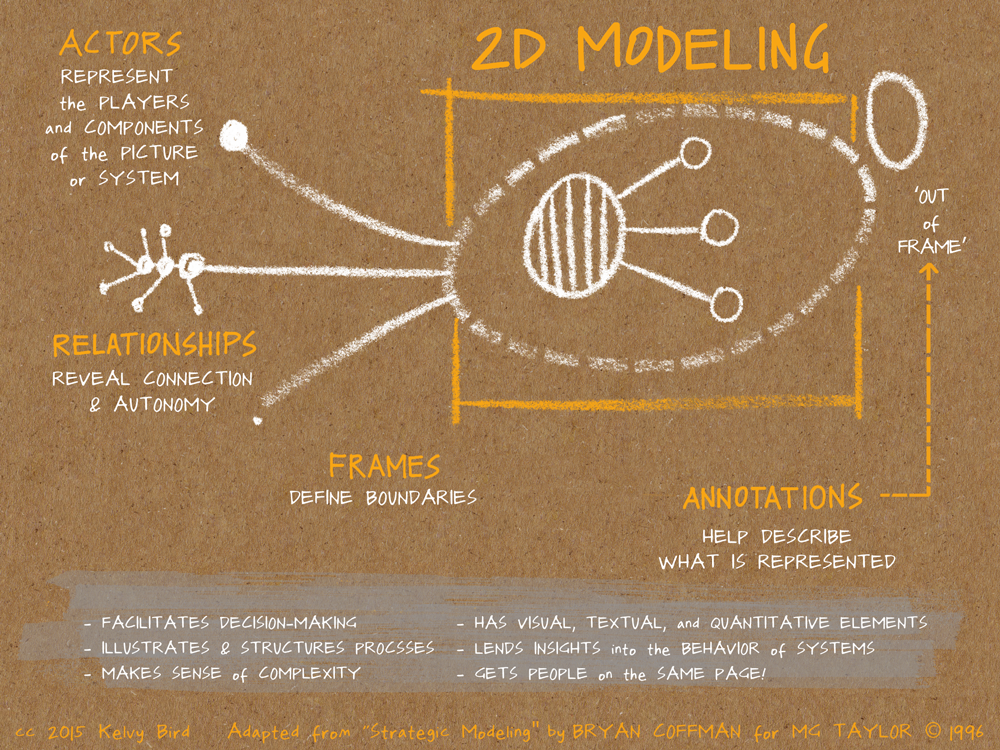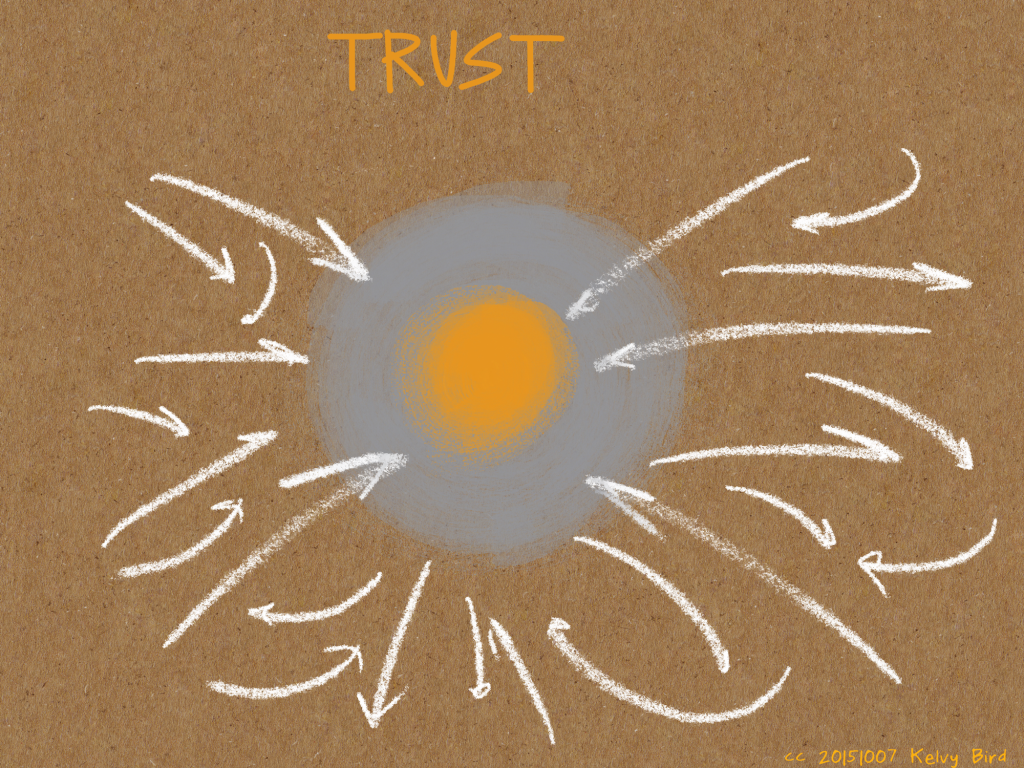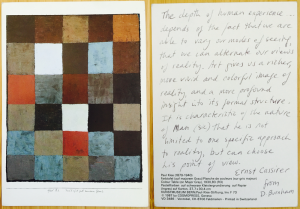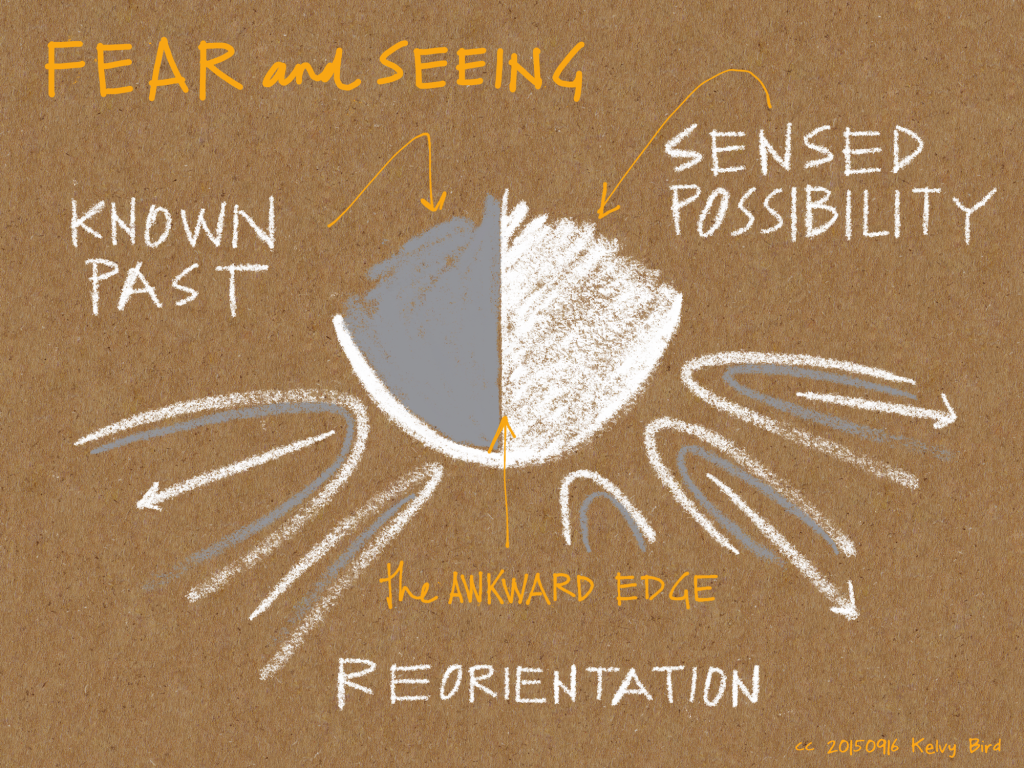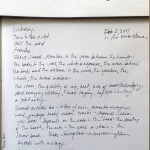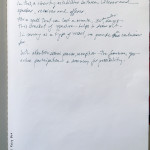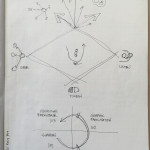Have had the pleasure and challenge to scribe lightning talks (3-5 min each) for MIT’s Department of Urban Studies & Planning. The talks aim to showcase faculty project work. They usually seem to be over before they begin – such fast bursts! Yet the enduring quality of the work carries across time.
Modeling
Part 1: What
To define parts is to seek sense and communicate arrangement within an existing wholeness. To name tree, mushroom, frog, stream, pond, path, boulder is to identify elements of a terrain, guideposts for movement within a landscape. We distill to the bits to help objectify segments of what we see and thus locate within what we believe to be real. We break things into subsets to better grasp the way things hold together and also reveal how they might not. (Oil and water, mixed and shaken, still will separate.)
To inquire into the relation of parts is to explore the interdependency and ripple effect of natural order. Limbs fall, leaves cover, rain drops, mushrooms grow. To observe relation fixes parts in a moment of time. One day, frog on log; next day frog in pond.
To further notice coolness, mist, dew, light fading, crackle of breeze through leaves, is to let ourselves pause in the moment of the scene – to suspend our movement and orientation with time, towards BEING OF. Simply. Essentially. Without an agenda – AS. Information comes to us, not from objects but from the space between, from the greater surround, the hum, the universal heartbeat – a pulse from life itself, offering containment for relation.
A model, therefore, is a snapshot in time, a cross-section of a perceived order, one picture of a moment: a past state, a present reality, an imagined future – each resting in unfolding life.
Models can incorporate change and re-form over time. It is through the act of crafting a model that we can actually probe into our understanding of trajectories. If one day two parts align and the next day they repel, what is the underlying structure of relation causing this magnetic switch? A model can give voice to the dynamic.
Visual modeling serves at the structural level of the iceberg, to outwardly reveal the internal theories influencing behavior and events/action.
Results vary. Parts move. Systems adapt in time. The foundational container holds steady. The model simply lays out components of this order, already existing, needing a hand to map it to life.
Part 2: How
The following model comes largely from MG Taylor and Bryan Coffman – one of my first and most treasured mentors. All the visual modeling i do, the prime mechanics of my scribing, harken back to what i learned from and witnessed in Bryan and in Matt Taylor.
Originally presented as a method for Strategic Modeling, i’m now trying to adapt the framework into a 2D Modeling Tool for the U.Lab and Presencing communities, as applied specifically to the Crystallizing and Prototyping phases of Theory U:
2D Modeling is particularly useful as a sensemaking and communication tool when trying to understand elements of a system, to bridge an idea from concept to action. It is a method for giving form to ideas – and structure to processes – that might not be articulated outside the mind or intuition. In the context of Theory U, we can use modeling at any phase to create visual displays that share projects and engage potential stakeholders.
EXPLORE and PRACTICE
Level One: Parts (“Actors”). Actors represent the people and components of the picture or system. On a blank sheet of paper, practice drawing abstract shapes and textures of all sizes. Start with circles, ovals, squares, rectangles, triangles, etc, to get your hand familiar with the materials and to find your comfort zone with drawing. Also explore different textures, for example: dotted edges, solid lines, filled areas, speckles, swirls, etc.
Level Two: Frames. Frames define boundaries and can help sequence actions over time and place. Think of frames as an ordering device, like acts of a play that together tell a story. Draw different types of boundaries as frames, including boxes, larger circles, or even using the edge of the paper AS the frame.
Level Three: Relationships. Relationships reveal proximity and interdependencies. Use arrows to show influence. Play with drawing shapes of similar and different sizes. See what they look like next to each other, on top of one another, far away from each other. You can think of the shapes as people from above, as if you are looking down with a bird’s eye view.
Level Four: Context. Context provides meaning and reason for the story to exist. Include the essence of what is wanting to be seen and heard through your model. If the drawing does not yet represent this perspective, and the story is still emerging, use annotation (words) to help describe what you are wanting to convey.
APPLY to PROTOTYPES
Use the following questions to guide your modeling process, to help organize and represent the current state of your prototype into a visual display.
Level One: Name the Parts
- Who is already involved? Who would you want to include?
- What other elements – such as organizations, sectors, or locations – do you want to represent in the picture?
Level Two: Explore Frames
- Are there phases to the development of your prototype?
- Are there boundaries to the prototype that are important to describe?
Level Three: Establish Relationships
- Where are connections between the parts and frames?
- Are there disconnects worth naming? What parts might be excluded, intentionally or not?
- How do YOU relate to the prototype and what might be your learning edge in the project?
Level Four: Reveal the Eco-System
- Does the picture include your original vision and intention?
- How does this root in an “emerging future whole, where there is a shift in identity and self?”
————————————————————————————————————-
The continued step for developing prototypes will be 3D Sculpting and 4D Embodiment. Clearly more to come on this one! Like many of these posts, a start….
Trust
A primary ingredient in Level 4 Scribing: Trust. Holding space, stretching time, pausing, being OF the room, knowing in gut that CLARITY WILL COME. It is not to be rushed – rather, it is a beam of gold gracing the being when mind, heart, hand open sincerely.
Here are some musings from today’s chicken scratch notes, while in desperate moments not able to draw, when nothing was clear. Reminders to a panicking self from a wiser Self:
Let go of urgency. Increase care. Slow down and go slow. Mind the breath. Increase patience.
Expand. Become the container. Envelop the whole that you can see – whatever you can perceive in the scene – picture – surround.
Source. Know this is your foundation. Hold steady in it.
Scale. Reach out in order to keep the moment in perspective; it is just a drop in a vast sea of drawing. Think of day, week, month, season, year, decade, lifetime, era….
Sense. At the wall, what wants to be drawn? Before making a mark, sense into the mark. If you can’t imagine it – don’t draw it. (That is will > listening). Listen first.
Stocks. Consider the tubs. Your board is like a bathtub; it can only hold X amount of ink. The viewer/participant is a tub; they only have X capacity to absorb content. You are a tub; you can only handle X flow-through.
Seek understanding. You can only represent as much as you know. Expand the boundary of your model to grow your capacity to make sense.
(If the drawing above looks like conception – maybe that is relevant…. )
((i also see the unintentional acronym: LESSSSS)) (((hm)))
Fear and Seeing
Years ago, a friend sent me this quote from Ernst Cassirer: “The depth of human experience… depends on the fact that we are able to vary our modes of seeing, that we can alternate our views of reality. Art gives us a richer more vivid and colorful image of reality, and a more profound insight into its formal structure. It is characteristic of the nature of man (sic) that he is not limited to one specific approach to reality, but can choose his point of view.”
I had rewritten the quote on a postcard of Paul Klee’s Farbtafel (auf majorem Grau) / Colour Table (on Major Gray) 1930. That the post card seems colorful – a range of rust, slate gray, bark, wet New England earth, night sky, fog – is testament to Klee’s genius, where he could reference the primary color as gray, yet stretch the subtlety to its maximum proportion through his experiments representing perception.
The postcard tumbled out of John Berger’s book Ways of Seeing, sweeping me off my feet in 1987 during a college course: art in social context. “Seeing comes before words. The child looks and recognizes before it can speak…. It is seeing which establishes our place in the surrounding world…”
The book found me again the other morning while I was seeking to re-familiarize myself with Jungian archetypes, specifically an interpretation where Fear is a gateway to Magician energy. I was seeking solace, and insight, having gone to bed the night before in tears (truly), anticipating with great fear an upcoming session for U.Lab where I will probably scribe for the largest audience of my entire life. (Ug.) Rationally, I know I am ready, that everything will be okay, and that there are many people supporting the success of this class, the broadcasts, and my part in that. (Etc.)
The fear was palpable, though, and to dismiss it would negate a huge amount of energy that also resides in its quivering, distasteful shell. To relate to that fear, and not call it unfounded or irrational or irrelevant even, was necessary to engage it.
I also went to bed that night wondering, “Is there a ratio between fear and potential? Is the scope of fear proportional to the scope of possibility in my hands, in our hands?”
“When two colors meet they form and edge whose enormous aesthetic potential can be realized only if the edge is treated as the occasion for drawing… To one side we will have solidity, hence mass; to the other, air and light.” – “The Man Who Forgot How to Paint” by Richard Hennessey. Art in America, Summer 1984.
Perhaps fear is the awkward edge between the past, the known (solidity) and possibility, the sensed (air and light).
Feeling unnaturally connected to the broader population of (at that time) ~35,000 people participating in this u.lab[1] broadcast – where I actually knew only a few dozen people participating, many others as small pictures on website profiles, and still others as nameless but named interested parties – feeling this kind of connection brings with it a sense of great responsibility. Not being able to see this global body might have contributed to the anxiety, since my heart felt bound to this forming organism.
How can I honor the whole that is wanting to emerge when I cannot see it?
Perhaps to see it, it is necessary to orient with another point of view. To do this, it is necessary to embrace the fear. It is only by relating to the fear, and using it as fuel, that the hand will open, extend, draw.
I know, i “K”now, that the fear I am (was) feeling is an indicator of some change necessary in me – me simply as a microcosm of our forming Lab, where change is necessary at system and global levels. This is probably the reason such a large number of people gravitate to the course: we either know the change we want to be part of, or we sense internally that change is required.
Personally, I really do not want anything to change, to be honest. For the planet and species? Of course. But change is really hard for me to metabolize, though I have a vault of coping strategies, based on a life of frequent rotation. Naturally, it is terrifying to be part of such a global movement wanting to activate change.
I cannot lay dormant. I must get up. I must show up. (Replace I with WE.) But in order to do this, I must also embrace fear, and somehow receive it as a gift. And this is where seeing enters.
Through seeing, we experience. Through experience, we perceive. Through perception, we orient. Through orientation, we choose, and direct ourselves. With this direction, we act.
How to see? How to see expansively, with true clarity? A starting point might be to recognize our spheres of awareness and, launching with the energy of the awkward edge of fear, take one step outside our comfort zones. Turn around. Look in another direction. Notice. Repeat, Repeat. Turn. Again.
[1] u.lab: Transforming Business, Society, and Self is an online MOOC (Massive Online Open Courseware) offering through MIT’s edX platform, initiated in January 2015 in conjunction with the Presencing Institute’s u.school ecology, “a global action research platform, and an eco-system of online and offline communities, working to understand and transform the underlying causes of the ecological, social, and spiritual crises of our time.” https://uschool.presencing.com/
Listening
Flight sometimes comes with travel, and with flight, expansion. Such was the case in 2011, when i found occasion to scrawl this out, relevant now in light of the recent 2015 IFVP conference. Hopefully it can be of use, even in it’s rawness, to field reflections…
Attention to the space between the hands, the body to the wall – the white expanse, the area behind the back and the distance to the circle, the speaker, the chairs, the broad numbers, the room, the quality of air, heat, hum of technology, doors swaying clicking, heels tapping, laptops shutting, a joint entry into place.
Listening is too quiet, to open, to receive, to become an organ of perception *, to let the self step aside, to step the self side. Aside self!
To listen is to let in, to trust, to establish circuitry. With attention comes pause, reception and active participation both – a doorway for possibility, a gateway to the Reciprocal Zone.
* “I have always been inspired by Goethe, the German poet and thinker who thought his main contribution was in the field of science—a phenomenological approach to science—not in his literary works such as Faust or his poetry. The essence of his approach is captured in the following sentence: “Every object well contemplated opens up a new organ of perception within us.” – Otto Scharmer, from: America Emerging – Western Civilization 2.0, Thirty-Third Annual E. F. Schumacher Lectures, November 2013, New York City.

